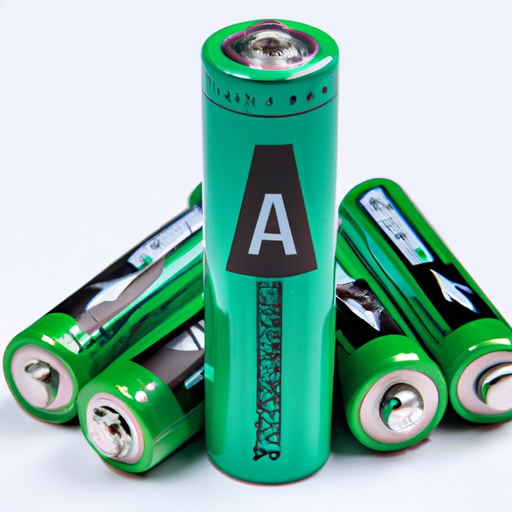AM2XF4 Rechargeable Batteries: Core Functional Technologies and Application Development Cases
Rechargeable batteries, also known as secondary batteries, are integral to modern technology, powering a diverse array of devices from consumer electronics to electric vehicles. The AM2XF4 designation may refer to a specific type of rechargeable battery, but the following overview highlights the core functional technologies and application development cases relevant to rechargeable batteries in general.
Core Functional Technologies
| 1. Lithium-Ion (Li-ion) Technology | |
| 2. Nickel-Metal Hydride (NiMH) | |
| 3. Lead-Acid Batteries | |
| 4. Solid-State Batteries | |
| 5. Flow Batteries | |
| 1. Electric Vehicles (EVs) | |
| 2. Renewable Energy Storage | |
| 3. Consumer Electronics | |
| 4. Medical Devices | |
| 5. Grid Energy Storage | |
Application Development Cases
Future Trends and Innovations
| Battery Recycling: As the demand for rechargeable batteries increases, sustainable recycling methods are becoming essential for recovering valuable materials and minimizing environmental impact.Battery Recycling: As the demand for rechargeable batteries increases, sustainable recycling methods are becoming essential for recovering valuable materials and minimizing environmental impact. |
| Advanced Materials: Ongoing research into new anode and cathode materials, such as silicon and solid electrolytes, aims to improve energy density, safety, and overall battery performance.Advanced Materials: Ongoing research into new anode and cathode materials, such as silicon and solid electrolytes, aims to improve energy density, safety, and overall battery performance. |
| Smart Battery Management Systems (BMS): The integration of IoT technology allows for real-time monitoring and optimization of battery performance, enhancing lifespan and efficiency.Smart Battery Management Systems (BMS): The integration of IoT technology allows for real-time monitoring and optimization of battery performance, enhancing lifespan and efficiency. |
Conclusion

Rechargeable batteries are pivotal in driving technological advancements across various sectors. Continuous research and development efforts are focused on improving efficiency, safety, and sustainability. As applications expand and technology evolves, the role of rechargeable batteries will become increasingly significant in the transition to a more sustainable energy future. The AM2XF4 designation, while specific, represents the broader trends and innovations that characterize the rechargeable battery landscape today.
AM2XF4 Rechargeable Batteries: Core Functional Technologies and Application Development Cases
Rechargeable batteries, also known as secondary batteries, are integral to modern technology, powering a diverse array of devices from consumer electronics to electric vehicles. The AM2XF4 designation may refer to a specific type of rechargeable battery, but the following overview highlights the core functional technologies and application development cases relevant to rechargeable batteries in general.
Core Functional Technologies
| 1. Lithium-Ion (Li-ion) Technology | |
| 2. Nickel-Metal Hydride (NiMH) | |
| 3. Lead-Acid Batteries | |
| 4. Solid-State Batteries | |
| 5. Flow Batteries | |
| 1. Electric Vehicles (EVs) | |
| 2. Renewable Energy Storage | |
| 3. Consumer Electronics | |
| 4. Medical Devices | |
| 5. Grid Energy Storage | |
Application Development Cases
Future Trends and Innovations
| Battery Recycling: As the demand for rechargeable batteries increases, sustainable recycling methods are becoming essential for recovering valuable materials and minimizing environmental impact.Battery Recycling: As the demand for rechargeable batteries increases, sustainable recycling methods are becoming essential for recovering valuable materials and minimizing environmental impact. |
| Advanced Materials: Ongoing research into new anode and cathode materials, such as silicon and solid electrolytes, aims to improve energy density, safety, and overall battery performance.Advanced Materials: Ongoing research into new anode and cathode materials, such as silicon and solid electrolytes, aims to improve energy density, safety, and overall battery performance. |
| Smart Battery Management Systems (BMS): The integration of IoT technology allows for real-time monitoring and optimization of battery performance, enhancing lifespan and efficiency.Smart Battery Management Systems (BMS): The integration of IoT technology allows for real-time monitoring and optimization of battery performance, enhancing lifespan and efficiency. |
Conclusion

Rechargeable batteries are pivotal in driving technological advancements across various sectors. Continuous research and development efforts are focused on improving efficiency, safety, and sustainability. As applications expand and technology evolves, the role of rechargeable batteries will become increasingly significant in the transition to a more sustainable energy future. The AM2XF4 designation, while specific, represents the broader trends and innovations that characterize the rechargeable battery landscape today.













